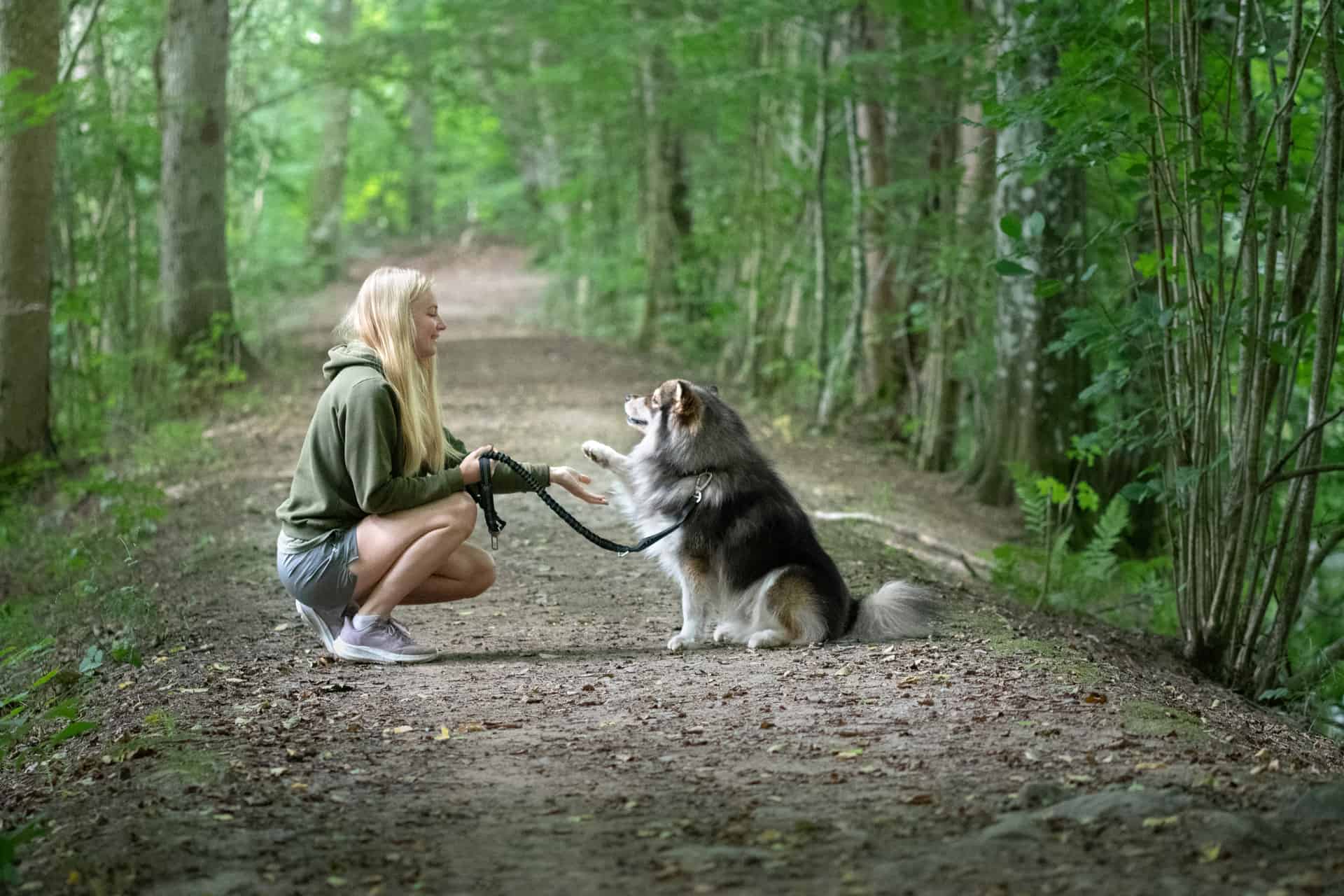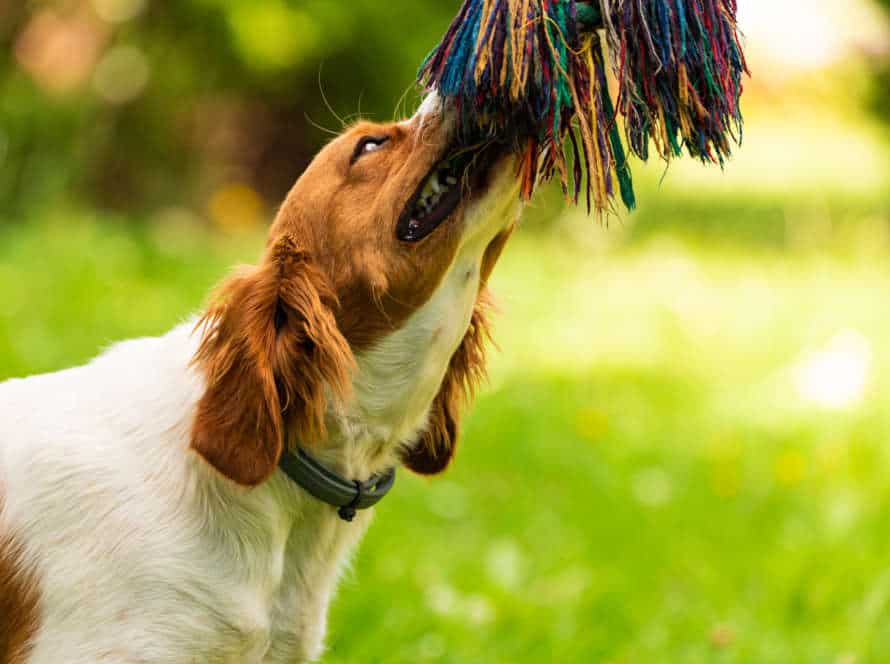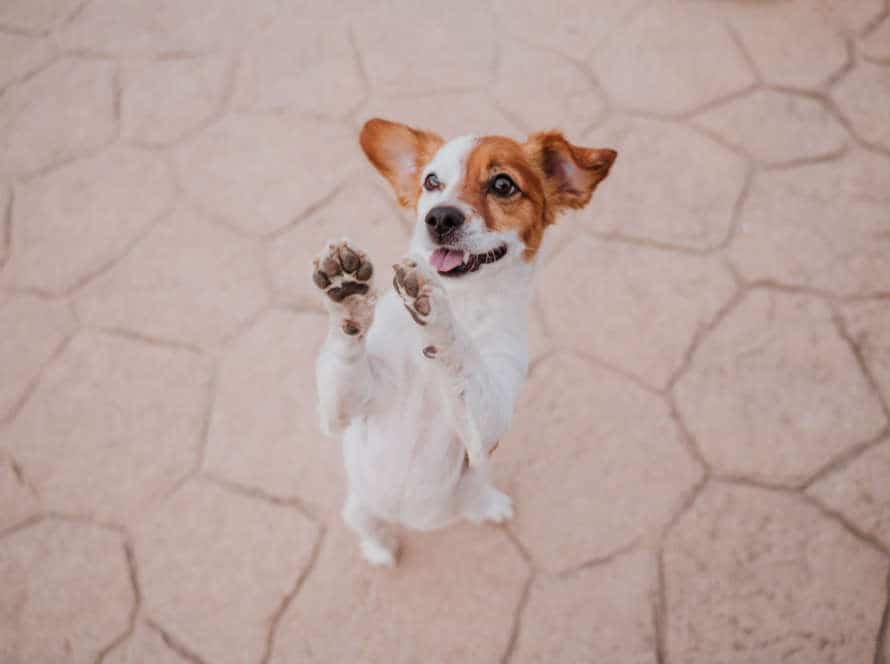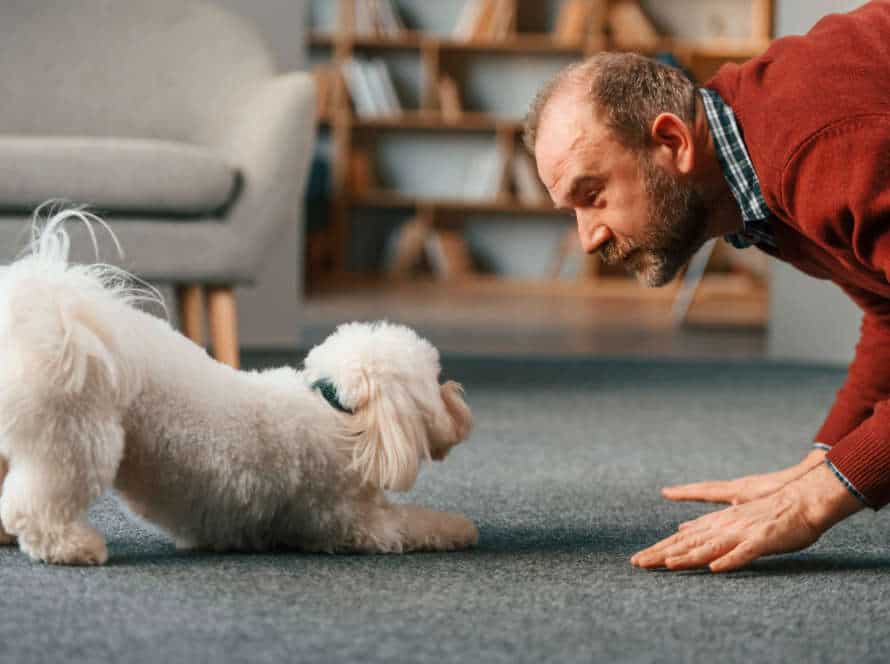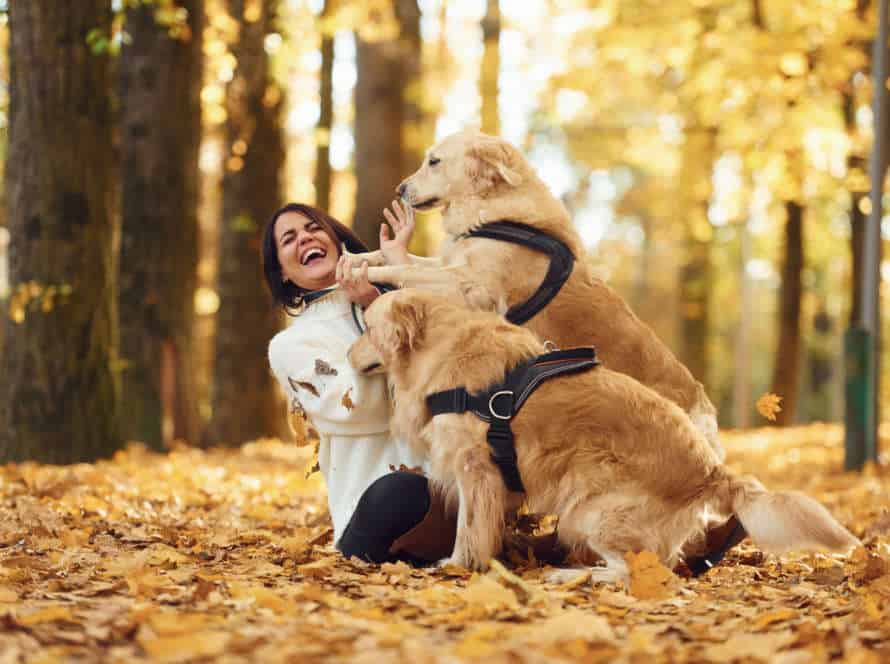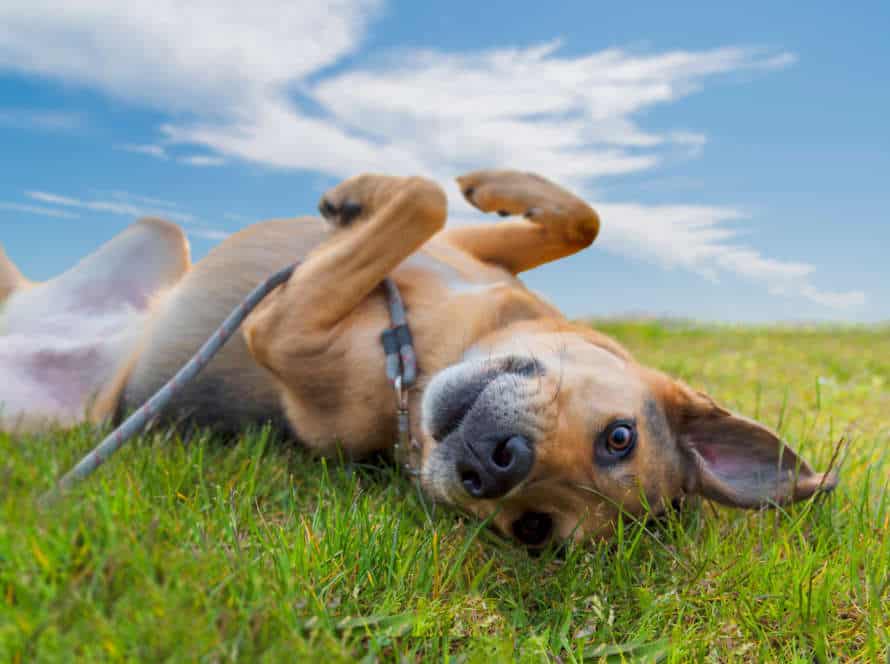Trick Training for Stronger Bonds: Connect with Your Adult Dog
Trick training is a great way to get closer to your adult dog. Plus, it keeps them physically and mentally fit. Here are some tips to help:
- Start simple. Try “sit,” “stay,” and “come.” Increase difficulty as your pup gets more confident.
- Use positive reinforcement. Treats, praise, and pats for success. This builds trust and strengthens your bond.
- Make it fun! Use playful tones. Use everyday items like towels, boxes, and hula hoops.
- Spend quality time. Trick training isn’t a chore. It’s an opportunity to bond with your pup.
Pro Tip: Keep sessions short – around 10-15 minutes. Too long and your pup will get overwhelmed.
Understanding Adult Dog Behavior and Learning Styles
Dogs are able to learn, regardless of age. But, adult dogs learn differently than puppies. They need different motivators, and training too. To create a strong connection with an adult pup, and make training more successful, it is important to understand and work with their nature, personality, and learning style.
Understanding the benefits of trick training for adult dogs
Treat training is a great way to build a strong relationship between your adult pup and you. Plus, there are loads of advantages to trick teaching your dog!
- Improved obedience: As your pup learns new tricks, they’ll understand commands better.
- Less stress and anxiety: Trick teaching is a mental workout for your pup that can help reduce tension.
- Improved socialization: When your pup learns tricks, it gives them the confidence to interact with people and other animals.
- Strengthens the bond between pup and owner: Trick training involves patience, positivity, and teamwork. It’s the perfect way to make your bond even better.
Know your pup’s learning style and behaviour, then pick the best tricks to teach them. You’ll be closer than ever!
Identifying your dog’s learning style
Knowing your pup’s learning style is critical to grasp their behavior and train them well. There are three main types: visual, auditory, and kinesthetic.
- Visual learners learn best from hand gestures and body language. They observe things around them.
- Auditory learners prefer sound cues, like verbal commands or whistles. They learn through repetition and a consistent approach.
- Kinesthetic learners learn best from physical cues, such as touch or hand signals. They learn with hands-on experience.
Discovering your pup’s learning style can help you customize your training to their abilities, making training sessions more effective and fun.
Avoiding common training mistakes
Dog training can be tough! It’s important to stay away from common mistakes to build a great connection with your pet and help them learn. Knowing your adult dog’s behavior and how they learn is the start of teaching them tricks.
Adult dogs have a short focus, they like brief training sessions. Too long and they may get demotivated.
Positive reinforcement works best for adult dog training. Things like treats, toys and praise. Don’t punish or yell at them – it’ll destroy their trust and make learning harder.
Patience and consistency are key for success. Repetition is important for adults dogs learning, and you won’t get anywhere in just one session.
By getting to know your pet, avoiding mistakes and using positive reinforcement, you and your furry buddy will have a great bond, they’ll learn quickly and you’ll have a happy relationship.
Basic Tricks for Adult Dogs
Tricks are a cool way to get closer with your adult pup! Not only is it fun, but it also helps your dog focus and stay mentally and physically active. It builds their confidence, reminds them of the basics, and gives you both a sense of success.
Here are some of the top tricks you can teach your grown-up dog!
Teaching Sit, Stay and Down
Strengthen the bond with your adult pup by teaching them basic tricks like Sit, Stay and Down. Here’s how:
- Hold a treat close to their nose and move it up and back. This should make them sit naturally. Reward and praise them. Repeat with a verbal “Sit” command. Eventually phase out the treat.
- Ask them to Sit, then hold your hand up with your palm facing their snout. Say “Stay“. Increase the duration between “Stay” and “Good job”, adding a release command over time.
- Ask them to Sit, lower a treat to the floor and pull it away. They should follow the treat and lie down. Praise & reward. Repeat with a verbal “Down” command.
Patience & persistence will help you teach your adult pup these tricks and foster a deeper connection.
Teaching “Leave it” and “Drop it”
Teaching your adult pup “Leave it” and “Drop it” is a great way to strengthen your bond and curb unwanted behaviors.
Here’s how to train “Leave it”:
- Show your dog something desirable – like a treat or toy.
- Hold another treat in your closed fist.
- Say “Leave it” and wait for your pup to stop trying to get it.
- Praise and reward with the desirable item.
For “Drop it”:
- Give Fido a toy or treat.
- Say “Drop it” and offer a better reward – like a treat or favorite toy.
- Praise and reward with the better item if they drop the toy or treat.
Repeat these exercises often to reinforce the commands and foster your relationship.
Teaching “Wait” and “Come”
Strengthen your bond with your adult pup! Teach them “Wait” and “Come” commands to keep them safe.
For “Wait“:
- Attach a leash.
- Hold a treat near their nose.
- Say “Wait” and step back.
- Reward when they stay still.
For “Come“:
- Attach leash.
- Say “Come” and pull on the leash.
- Reward when they come.
- Practice in different places.
These basic tricks help build your relationship with your pet. Use positive reinforcement and patience when training.
Intermediate Tricks for Adult Dogs
Trick-train your adult dog! Bond with them, and give your pup a mental and physical workout. Here’s how: Step up to intermediate tricks! Have fun, and make your connection even stronger.
Teaching “Shake” and “High Five”
Teaching your adult pup “shake” and “high five” is a cool and gratifying way to make your connection even better! Here’s what to do:
- Get them to “sit” in front of you.
- Display a treat and close your hand around it. Wait for them to try to use their paw.
- When they touch your hand, say “shake” and give them the treat right away.
- Repeat until they comprehend that pawing your hand equals a reward.
- Once they’re good with “shake,” hold your hand up high and say “high five” when they paw at it.
Trick training not only grows your bond with your dog, but also gives them physical and mental stimulation.
Pro Tip: Always give your pup treats and compliments when they do a trick correctly, to motivate good behavior.
Teaching “Roll Over” and “Play Dead”
Teaching your adult canine “Roll Over” and “Play Dead” can be a fun and rewarding way to increase the bond and help their mental and physical wellbeing. Here’s how:
“Roll Over”:
- Have your pup lie down close to you.
- Put a treat near their nose.
- Move it to their shoulder and encourage them to roll onto their side.
- Give them the treat and say “good” or “yes”.
- Increase the angle of the treat until they roll onto their back.
“Play Dead”:
- Let your pup lie down on their side.
- Hold a treat near their nose and make them roll onto their back.
- When they’re on their back, keep the treat near their nose and lure them to roll onto their side again.
- Give them the treat and give praise.
Always use positive reinforcement and keep training sessions short and enjoyable.
Teaching “Take a Bow” and “Crawl”
Teaching tricks such as “Take a Bow” and “Crawl” to an adult dog is an awesome way to strengthen the bond between you and your pup. Here are the steps to teach your pet these tricks:
- Take a Bow:
- Get the dog in a standing position.
- Put a treat near their nose and move it towards the ground.
- As the pup lowers their head, say “take a bow” and reward them.
- Keep doing this until they respond to the verbal cue without the treat.
- Crawl:
- Get the dog in a down position.
- Hold a treat near their nose and move it towards you.
- As the pup crawls, say “crawl” and reward them.
- Gradually increase the distance between you and your dog.
With patience and practice, your pup will learn these tricks. You will have a stronger bond with your furry friend.
Advanced Tricks for Adult Dogs
Trick training is a cool way to keep your adult doggo fit and active. It’s also a fun way for you and your pup to bond! Here, we will talk about some more advanced tricks to learn. High five, roll over and more! Let’s start now!
Teaching “Spin” and “Twirl”
Bonding with your adult dog and challenging their cognitive abilities can be fun by teaching them “Spin” and “Twirl”! Here’s how:
For “Spin”:
- Hold a treat at their nose level and guide it in a circular motion, saying “spin”.
- Praise and reward them for following the treat and finishing a full circle.
- Keep repeating, with the command word “spin” and treat for guidance, until they learn.
For “Twirl”:
- Stand in front of them and hold a treat in front of their nose.
- Move the treat in a circular motion towards their tail, saying “twirl”.
- Praise and reward them for following the treat and completing a full circle.
- Repeat the process, using the command word “twirl” and treat to guide them, till they learn.
Advanced tricks like these can be a rewarding way to connect with adult dogs while stimulating them mentally.
Pro Tip: Motivate adult dogs during training sessions with positive reinforcement, such as treats and praise.
Teaching “Weave” and “Jump through a hoop”
Train your adult dog awesome stunts like “weave” and “jump through a hoop“! It’s an enjoyable and fulfilling method to fortify your relationship with your four-legged buddy.
Here’s some advice to make sure a successful training session:
- Begin with fundamental commands such as “sit,” “stay,” and “come” to set up a definite line of communication between you and your pup.
- Utilize positive reinforcement techniques like treats, praise, and playtime to motivate your pup and keep them interested.
- Divide the trick into smaller, easier steps to help your pup learn slowly and avoid disappointment.
- Train regularly, but maintain the sessions short to stop your pup from becoming overwhelmed or bored.
- Keep in mind to be patient, consistent, and mild with your four-legged friend. Trick training is an outstanding way to create a powerful bond with your adult dog while having fun and learning new skills together.
Teaching “Balance” and “Back up”
Teaching “Balance” and “Back up” are advanced tricks. They can help build a strong connection between you and your adult pup. Plus, they’re both mentally and physically stimulating.
To teach the “Balance” trick:
- Start with a solid object like a balance ball or a low platform.
- Hold a treat above your pup’s nose. Gently lure him to put his front paws on the object.
- Give him the treat and repeat. Do this until he’s comfortable standing on the object.
- When he is, encourage him to shift his weight and balance.
- Reward him for maintaining balance. Gradually increase the time he spends on the object.
To teach the “Back up” trick:
- Stand directly in front of your pup.
- Use a hand signal or verbal cue. Encourage your pup to back up.
- Gently move forward towards them, so they don’t sit down.
- Reward your pup for backing up. Do this until they can back up without you moving closer.
These tricks help with bonding. They also stimulate your pup and can help build their confidence.
Tip: Practice these tricks in a quiet environment. When your pup is comfortable, perform them in public.
Troubleshooting and Tips for Successful Trick Training
Trick training is a great way to build a closer bond with your grown pup. But it can be tricky when your dog is a grown-up. This section provides troubleshooting advice and tips to get the most from your trick training sessions with your adult pup.
Identifying when to move on from trick training
Trick training can be super fun for adult dogs and their owners. But when should you move on? Here are some signs:
- Your pup no longer shows an interest in learning new tricks.
- Stress and frustration during sessions.
- Little progress despite your best efforts.
To have successful trick training, try these tips:
- Keep sessions short and frequent.
- Use positive reinforcement – treats, praise and playtime.
- Break complex tricks into smaller steps.
- Be patient and don’t force the pup.
- Consider a professional dog trainer if needed.
- Pro Tip: Safety and comfort come first. Have fun but know when to move on or ask for help.
Understanding how to maintain trained tricks
Trick-training is a great way to strengthen your bond with your adult pup. But, keeping those tricks up can be a challenge. Here’s how to make sure your pup remembers their tricks:
- Practice often: Consistent practice is key. Schedule regular training sessions with your pup to help them keep what they’ve learned.
- Reinforce training: Reward them with treats or praise when they do a trick right.
- Spot any issues: If they struggle with a trick, figure out why and adjust your training. For example, if it’s a high-five, break it down into smaller steps and work up to the full trick.
- Be patient: Your pup needs time and patience to learn and remember tricks. Don’t get frustrated or give up if it takes longer.
By following these tips and troubleshooting any issues, you’ll be able to keep your pup’s tricks and deepen your bond.
Avoiding common training roadblocks and mistakes.
Trick training your adult dog can be an enjoyable and gratifying experience. But, it can also come with some common issues. Here’s how to dodge those roadblocks:
- Start by teaching your pup easy tricks.
- Use positive reinforcement like treats, toys, and compliments to encourage your dog’s progress.
- Be steady with your training and don’t give up if your pup doesn’t get it straight away.
- Don’t get mad if your pup doesn’t obey a command. Have a break and start again later.
- End each session with lots of compliments and rewards.
By following these tips and avoiding mistakes, you can have fun and build a strong bond with your adult dog while teaching them new tricks.
Frequently Asked Questions
Q: Can any dog learn trick training?
A: Yes, any adult dog can learn trick training as long as they are willing to learn and have the physical ability to perform the tricks.
Q: What are the benefits of trick training for my dog?
A: Trick training provides mental stimulation for your dog, helps develop a stronger bond between you and your dog, and can also improve their overall behavior and obedience.
Q: What kind of tricks can I teach my dog?
A: You can teach your dog a variety of tricks such as shake, roll over, spin, play dead, and many others. It’s important to start with simpler tricks and gradually work up to more difficult ones as your dog becomes more confident and skilled.
Q: How do I get started with trick training?
A: Start with basic obedience training to establish a foundation for communication and respect. Then, choose a trick that is appropriate for your dog’s skill level and use positive reinforcement to encourage and reward their progress.
Q: Can trick training be harmful to my dog?
A: No, trick training is a safe and enjoyable activity for your dog as long as you use positive reinforcement methods and do not force them to perform any trick beyond their physical ability or comfort level.
Q: How long does it take to train my dog to perform a trick?
A: The amount of time it takes to train your dog to perform a trick depends on their individual ability, the complexity of the trick, and the consistency and patience of the training process. Some dogs may learn a trick in just a few sessions, while others may take several weeks or even months to perfect it.

